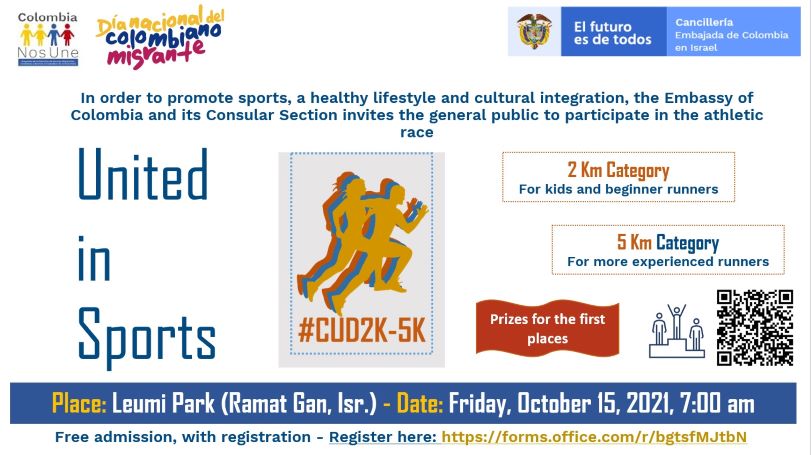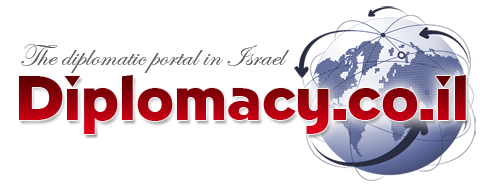Art & Culture
- Details
- Written by Stella Szpira
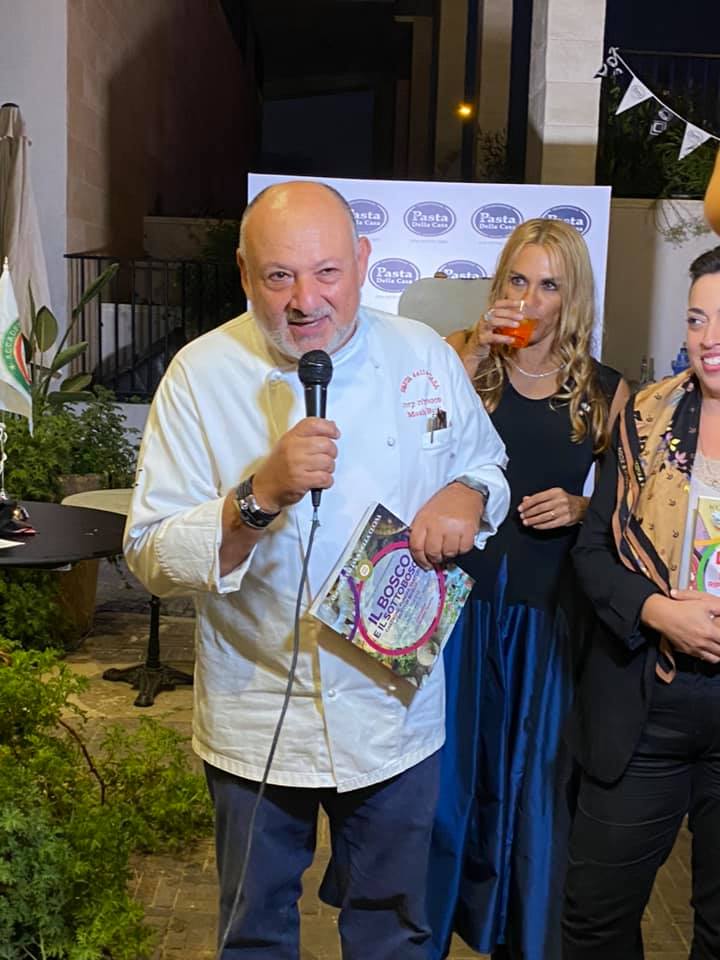
Pasta della Casa, a pasta factory by Chef Moshe Barel, specializing in the production of fresh pasta products for the last 30 years, was the venue hosting an evening of culinary experience with Accademia Italiana della Cucina – The Israeli Chapter of the Italian Academy of Cuisine
The Academy is an international body, with branches in over 70 countries and over 200 chapters in Italy alone
As you turn the corner onto Derech Afek Street in Kfar Saba, the front of Pasta della Casa Factory and shop, comes into full view
Dr. Cinzia Klein, Academy Delegate of the Israeli chapter and Chef Moshe Barel greeted us with a cordial handshake and a Buona sera and Shalom.
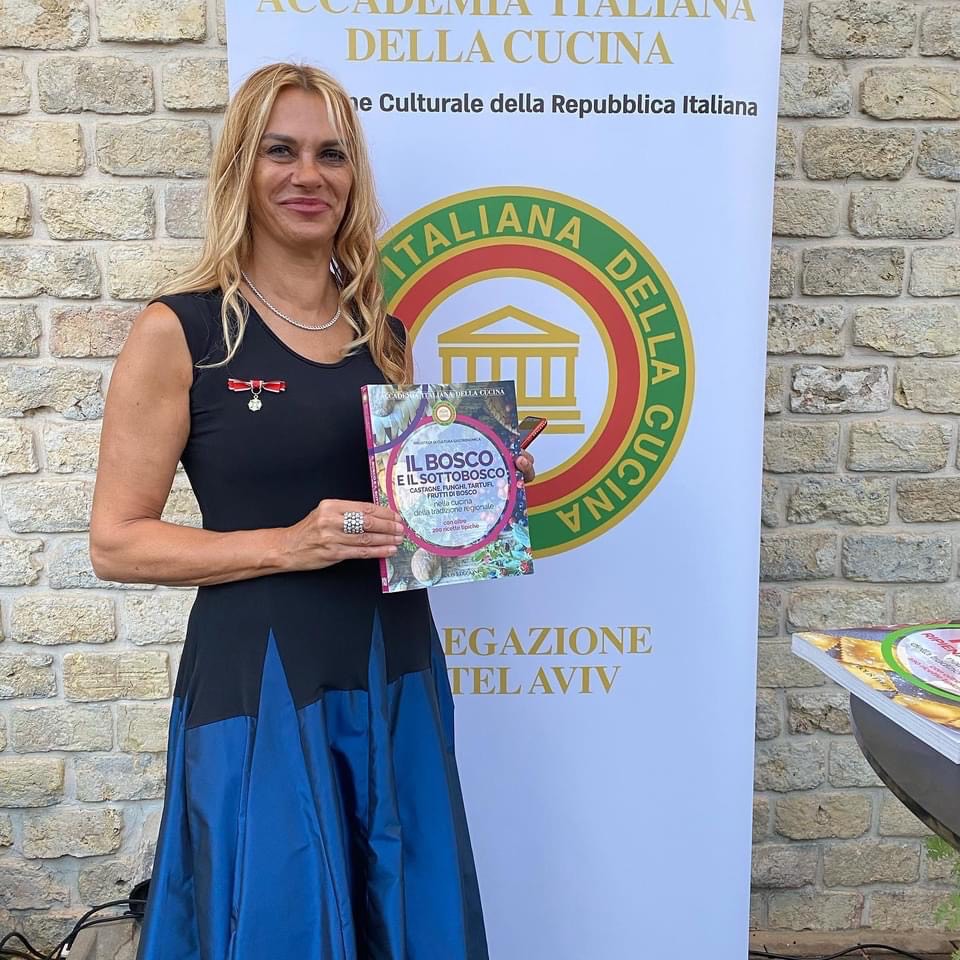
As you walk into the shop entrance a showcase displays a marvelous variety of home-made pasta produced on site, wines and other Italian specialties. The site was decorated in an Italian style, with Italian music playing gently in the background. The front patio, an open-air place offers a variety of the best pasta: chestnut and cream ravioli, in sage butter, peas and chestnut chips; mushroom and and truffle sauce tortellini; short pasta filled with fresh wild mushrooms, oregano, olive oil and white wine, fried potato gnocchi.
The pasta melted in the mouth
We all cheered and praised chef Moshe Barel and the outstandingly professional and efficient staff
Apfel Strudel and other delicious specialties crowned the charming evening
Bartenura wines were poured and special offers were given to shoppers in the store
According to Dr. Klein, the Incontro Ecumenico is a culinary meeting, one that is held on the same date by all the worldwide chapters of the Accademia
The theme of the meeting was the book published by the Academy: “Il Bosco e il SottoBosco: castagne, funghi, tartufi, frutti di bosco nella cucina tradizionale italiana” (Forest and undergrowth: chestnuts, mushrooms, truffles and berries in the regional culinary tradition). The book was offered to Chef Moshe Barel as well as to the other delegates and guests of the Accademia.
Chef Barel will be given an award during the SixWeek of the Italian Cuisine in the World.
A brief of Jewish Pasta History was held by Mr. Roberto della Rocca Vice President of the Israel-Italy Chamber of Commerce, symposiarch of the event together with Ms. Klein.
Among the notable personalities attending the aperitivo were Mr. Emanuele Oldani, Italian Consul in Israel; Ms. Sarah Eti Castellani, Deputy Head of Mission; Ms. Giulia Calabrese in charge of the Press and Media Affairs of the Embassy of Italy in Israel; Mr. Rocco Palma, in charge of Cultural Affairs of the Embassy of Italy in Israel and a member of the Accademia, H.E. Mr. Amos Radian, a former Israeli ambassador to Italy; Ms. Sabrina Fadlun, vice delegate of the Accademia Italiana della Cucina as well as other dignitaries and members of the Academy.
We all cheered and praised chef Moshe Barel and the outstandingly professional and efficient staff
Facebook Accademia Italiana della Cucina - Delegazione Tel Aviv
Photos Stellusz
- Details
- Written by TAU
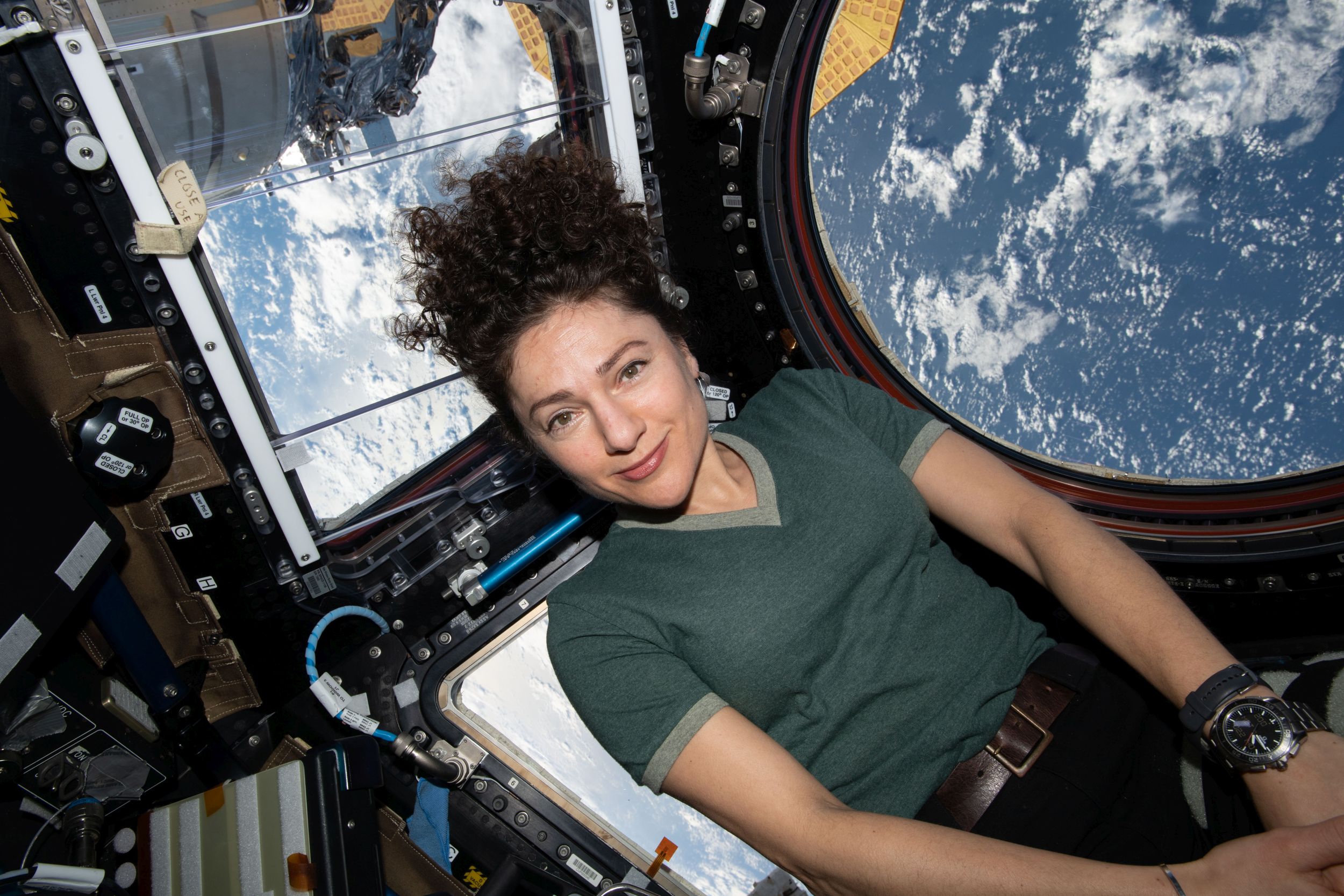
In Exclusive Event: Jewish-American Astronaut Jessica Meir Addresses TAU Governors
“We have to work together to truly preserve our planet for the future,” says Jewish-American trailblazer.
NASA astronaut Dr. Jessica Meir on Thursday addressed Tel Aviv University's 2021 Board of Governors Meeting, discussing her missions to space, life under extreme environmental conditions, and the relationship between her research and combating climate change.
Meir, who is also a marine biologist and physiologist, delivered her remarks by live broadcast at the Yehiel Ben-Zvi Academic Symposium, entitled “Between Climate Change, Space Research and Life under Extreme Conditions,” held on the TAU campus. This year's symposium topic highlights TAU’s prioritization of climate change research. As part of this campus-wide effort, TAU recently launched the Center for Climate Change Action.
WATCH: Dr. Jessica Meir honoring late Israeli astronaut Ilan Ramon.
Meir, the fourth Jewish woman and 15th Jewish person ever to travel to space, was born to a Swedish mother and an Israeli father, who grew up in Tel Aviv. During her virtual presentation to the symposium, Meir spoke of her connection to Israel and displayed several images of the country captured from outer space. “Israel is a very important part of me,” she said, also mentioning the personal items she brought to the International Space Station including an Israeli flag, Hanukkah socks bearing Stars of David and menorahs, along with a commemorative coin honoring late Israeli astronaut Ilan Ramon. Meir has celebrated her Jewish identity and ties to Israel on her widely followed social media accounts.
“We take a lot of photographs from the space station which can be used by scientists on the ground to see things like our changing planet,” said Meir from her current station in Houston, Texas. “By looking at things like the retreat of glaciers from the space station, at the same vantage point from which we’ve looked at for decades, scientists can make measurements and understand what’s going on with the ever-pressing battle with climate change.”
Answering a question from the crowd, Meir elaborated on the impact of space research on climate change.
“I’ve been an avid environmentalist since well before I got to space, and I assumed it would resonate even more loudly [once there]—and it really did,” said Meir. “You cannot avoid seeing how fragile it is, how special it is, and how we need to protect it. You don’t see borders from space, at least the ones we’ve imposed upon ourselves. We have to do what we can and work together to truly preserve our planet for the future.”
In 2013, NASA selected Meir to join its highly selective astronaut program. During her first space mission in 2019, Meir and fellow NASA astronaut Christina Koch made history when they completed the first all-woman spacewalk. Meir has to date participated in three space missions and spent a total of 205 days in space. Among her many honors, Time Magazine named Meir as one of the 100 Most Influential People of 2020.
“I want to dedicate this talk and our time today to the crew of the Space Shuttle Columbia, and, of course, Ilan Ramon, the first Israeli in space who was part of this mission,” she said of the tragic 2003 accident in which all seven crew members perished.
In addition to Meir, Israel’s Minister of Environmental Protection and TAU alumna Tamar Zandberg spoke at the symposium.
“Addressing the diverse challenges of climate change will require more than national policy,” she said. “It will require unprecedented collaboration across sectors and regions. It will also require joint, advanced research and studies. Space technologies can help in tackling major climate problems.”
TAU Rector Prof. Mark Shtaif chaired the symposium that was moderated by Prof. Colin Price, Head of the Environmental Studies Department, Porter School of the Environment and Earth Sciences. The symposium is held in memory of Yehiel Ben-Zvi, a former TAU Vice President.
“There are many challenges, but also many opportunities to help us forge a more sustainable planet and have a cleaner, more just world for our children and grandchildren,” said Price. He explained that Tel Aviv University’s strides in combining space research and climate research include the multidisciplinary advances at TAU’s Center for Nano-Satellites and New Space, the Minerva Dead Sea Research Center, and the Center for Climate Change Action. As part of TAU’s national and global contributions, he added that the University will work with Eytan Stibbe, who is slated to become the second Israeli to travel to space next year.
TAU professors Dr. Ram Fishman, School of Social and Policy Studies, and Dr. Vered Blass, Porter School of the Environment and Earth Studies, concluded the symposium. They respectively spoke about tracking the effects of climate change on low income populations, and assessing the impact of new technologies on sustainability. They also explored the impact of COVID-19 on the environment.
WATCH: Jessica Meir's full speech at the 2021 TAU Board of Governors Meeting
Photo courtesy NASA.
- Details
- Written by Silvia G. Golan
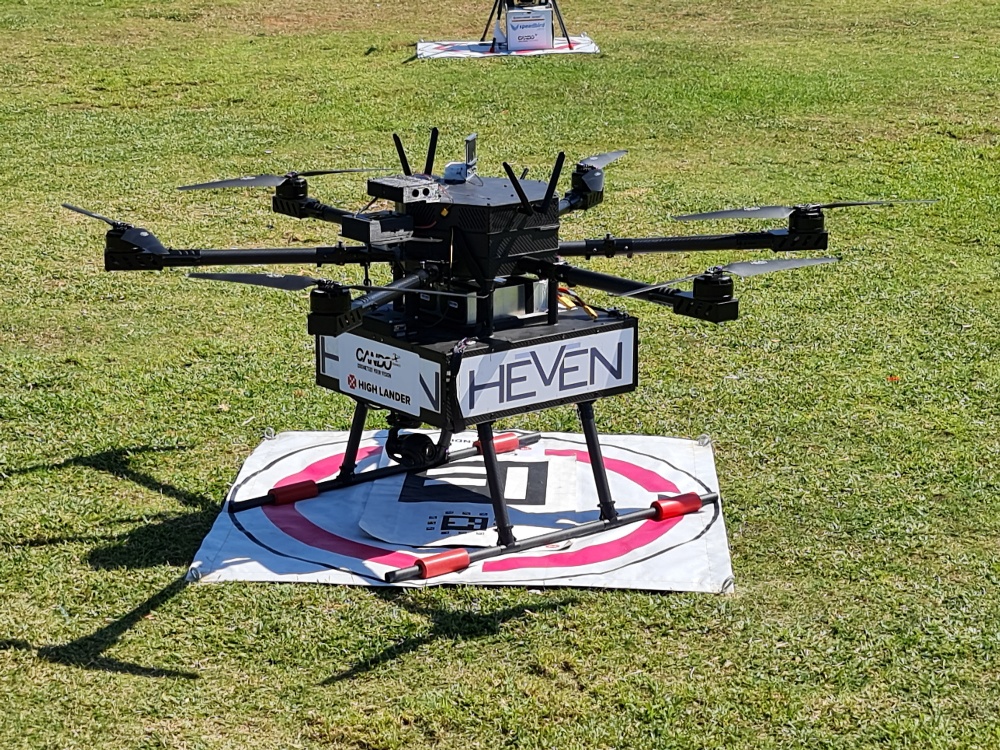
Do You want Sushi, Ice-Cream and Medicine? get them Via Drones!
Third Stage of the National Drone Initiative Takes Off:
3,000 flights above Tel Aviv, Ramat haSharon, Herzliya and Hadera, and a flight transport in Brazil, controlled by the management system in Israel
October 11, 2021- TEL AVIV: Israel’s National Drone Initiative, which first began its flights over urban areas in January 2021, launched its third phase, attended by five companies which manage and operate autonomous drone networks and won a grant from the Israel Innovation Authority in the framework of its pilot program, as well as other companies and organizations with a drone fleet who are interested in taking part in the world’s leading pilot program. This is the third stage in a series of eight demonstrations expected to take place during the coming two years, during which tens of thousands of sorties will take place in the skies above Israel.
Beginning on Sunday, October 3rd, and for ten days, flights will take place above residential areas in Tel Aviv-Jaffa, Ramat Sharon, Herzliya and Hadera, while in parallel a flight transport will take place in Brazil, controlled by the management system in Israel.
The drones are expected to carry out around 300 flights per day above open areas, among other purposes for carrying out different kinds of tasks on flight paths assigned by the joint control system. These include:
Cando and High-Lander will bring sushi deliveries ordered by customers via a dedicated app, and will deliver them to Tzuk beach in Herzliya. Furthermore, they will also have a drone performing autonomous security missions for an emergency facility (Reading Fire Station), so that the drone located at the charging station is activated autonomously.
SkyLinx and FlyTech will conduct a pilot where customers will be able to enter their order via a dedicated app and receive their ice-cream via drones at Charles Clore Park (next to Manta Ray restaurant).
All participating companies, including Simplex and DownWind will perform flights over urban areas in the center of Tel Aviv. HarTech Technologies Ltd and Airwayz will perform urban flights over the Hadera area.
Flights to deliver donated blood, platelets and plasma from the Magen David Adom (MDA) Blood Bank to Sheba-Tel HaShomer Hospital, with the goal of verifying the method of packaging, the flying, and the procedures so that they will meet the Ministry of Health regulations. As such, the goal of this stage is to consolidate the required procedures so that every company will be able to offer this kind of service at every blood bank and hospital in Israel when required.
Dror Bin, CEO, Israel Innovation Authority: “The National Drone Initiative is reaching new heights on its way to deployment in Central Israel – Tel Aviv-Jaffa, Ramat HaSharon, Herzliya and Hadera, and is on its way to creating a globally leading ecosystem in this field. In order to advance and to bring the technology to the point of creating an economic and sustainable model both for the manufacturers of the drones and for the Israeli public, we are extending the flight space to the center of Israel as well as the periphery. In the framework of the third demonstration, in which 16 Israeli companies and international representatives will participate, there will be a number of simultaneous flights in Israel and Brazil. In the framework of the third demonstration, we will take another step towards the integration of technology, regulation and public support, moving closer to creating an active model that will allow end consumers to enjoy cargo delivery via drones across the country, while placing an emphasis on safe, efficient, and speedy operation. In the framework of the demonstration there will be cargo delivery flights by commercial firms in different areas directly to the end consumer. Such unique collaboration between the Innovation Authority, the Civil Aviation Authority and Ayalon Highways is a catalyst for additional public entities such as the IDF Home Front Command, Magen David Adom, United Hatzalah emergency services and other commercial entities to benefit from the extraordinary capabilities demonstrated in this pilot.”
Itamar Ben-Meir, CEO Ayalon Highways: “Managing a smart aerial space, with drones flying simultaneously over the heart of metropolitan Tel Aviv, controlled from the Savidor Metropolitan Traffic Control Center, which includes unique technological demonstrations in the area of drone flights from the time the product is ordered by the customer until they receive it on the doorway of their home, constitutes a meaningful step for the National Drone Initiative, as part of future transport solutions being led by Ayalon Highways. Such unique collaboration in the initiative between Ayalon Highways, the Innovation Authority and the Civil Aviation Authority, is a catalyst for additional public entities like the IDF Home Front Command, Magen David Adom, United Hatzalah emergency services and other commercial entities to benefit from the extraordinary and innovative technologies demonstrated in this initiative and in pooling resources for the benefit of the public.”
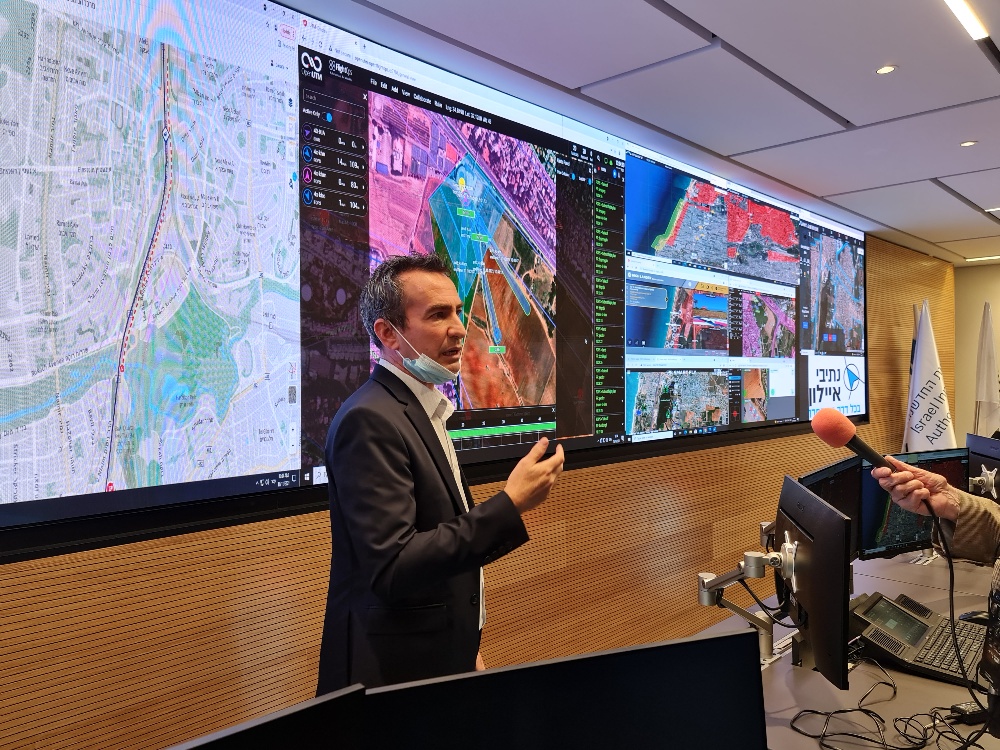
Joel Feldschuh, Director of the Civil Aviation Authority: “The Civil Aviation Authority has been a partner to the National Drone Initiative from the day of its establishment. The goal of the CAA’s partnership is to learn the future regulatory requirements in parallel to giving approval to the initiative’s security procedures. The CAA staff who are partners in the planning and the implementation of the initiative are experts in the different fields of flight regulation – registering air companies (aerial operators), registering pilots of unmanned aerial vehicles, registering aircrafts and control systems in terms of engineering and operationally and in the areas unique to this initiative: autonomous management of the aerial space. The CAA is engaged in development of the Israeli aerial space to integrate the innovative capabilities of the UTM world – management of autonomous, smart and mechanized aerial traffic for unmanned aerial vehicle systems, whose goal is to allow more extensive operation in using UAVs that serve the public with the highest level of security.
Sigal Weizmann, Tel Aviv-Jaffa Council Member with the Innovation Portfolio: “The Tel Aviv-Jaffa Municipality sees the use of drones as an important infrastructure that can serve citizens in the present and the future, as a way of providing health services, dealing with a medical emergency, agriculture, securing sites, monitoring movement, reducing traffic, and thus can lead to a reduction in greenhouse gases; support for the IDF Home Front, fire fighters and rescue services, postal delivery and more. It is our duty to ensure secure flight routes in every aspect that relates to privacy, noise and additional challenges that touch on drone flights in a populated area. I welcome this national initiative that leads us forward towards a secure future.”
The joint flights will be operated by six different companies listed below alongside the Israeli Police, the National Fire Department and the IDF Home Front Command. They will be autonomously managed from the Ayalon Highway Air Traffic Control Center. At this center, one can view the management and supervision system for airborne drones flying in the area, demonstrating a situation where dozens or even hundreds of drones – in the future – fly across the skies on various missions, operating in a uniform airspace. The system will be able to prioritize the various drone flights and clear the airspace when a large aircraft enters or when one of the aircrafts operated by the emergency services organizations enters in the event of an emergency.
The initiative, which originates in a partnership between the Israel Innovation Authority, the Ministry of Transport (through Ayalon Highways), the Civil Aviation Authority, and the Smart Transportation Administration, was established with the goal of advancing the deployment of drones for the benefit of the public, in order to assist in reducing congestion on the roads and to establish a national aerial network, managed for the benefit of transporting medicines, vaccines, tests and medical equipment, as well as retail shipments and more.
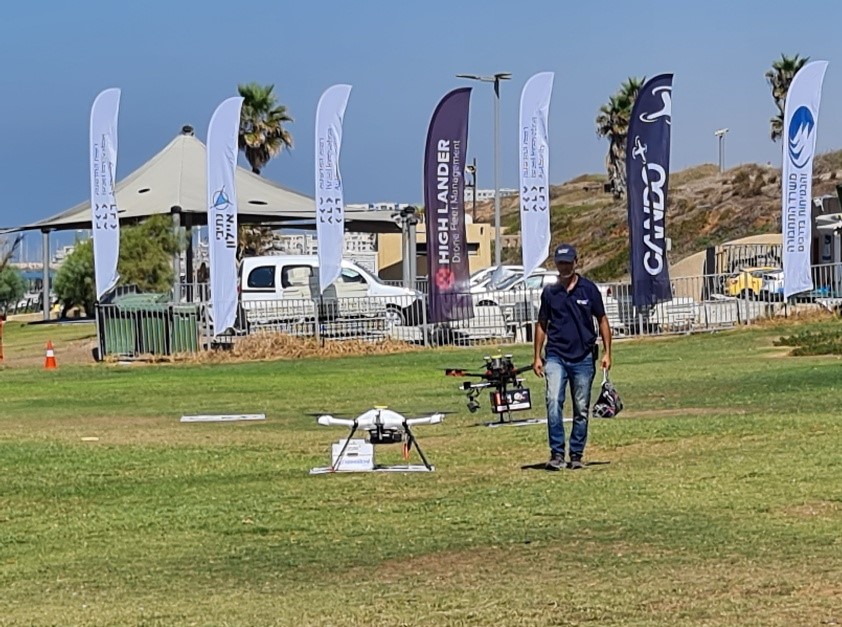
The companies participating in the demonstration:
High-Lander Aviation Ltd – This company facilitates advanced autonomous aerial command & control systems to manage a fleet of drones and currently operates one of the world’s leading UTM (Unmanned Traffic Management) solutions, providing autonomous solutions in the areas of Delivery, First Response, and Public Safety. The system controls the aerial space and all the missions in real time and completely autonomously. Cando Drones is an aerial drone company that builds and manages a fleet of autonomous drones. Cando Drones provides accessibility to a complete and optimized solution (TurnKey), which includes organization of the aerial space, dealing with regulation, outlining the solution and integration of the systems, managing ground logistics, implementation, professional and technical training and support. The types of projects the company deals with includes integration of drones in the fields of security, delivery, and mapping.
FlightOps/Simplex Interactive – FlightOps.io and Simplex are the first companies in Israel to receive approval for group flights of unmanned aircraft missions beyond-visual-line-of-sight (BVLOS), and since then have carried out hundreds of operational sorties in complicated urban areas. The company develops unique technology for controlling hundreds of drones in the joint aerial space and is involved in many operations in Israel and the United States. FlightOps’ technology controls the challenging and complicated aerial space in Tel Aviv and its surroundings, allowing delivery services and the use of commercial, optimized drones for all the companies participating in the project.
HarTech Technologies Ltd. – HarTech Technologies develops advanced command & control systems for autonomous management of unmanned aerial, sea, and land platforms. In the framework of the pilot, HarTech is demonstrating an autonomous command & control system for operating and managing various types of drones in a managed airspace. This includes execution of multiple tasks by drones in full autonomous coordination, controlling the space and complying with safety regulations, while factoring in aircraft operated by other parties.
FlyTech Company (F.T. Aerial Solutions Ltd.) – FlyTech specializes in remotely operating manned aerial platforms for civilian and security applications. It operates in the fields of civil engineering and building, agriculture and renewable energy, and security and safety. The company leads in the field of air transport services to the civilian world and has a permit to operate drones beyond-visual-line-of-sight (BVLOS) and is the first to authorize a drone operator for beyond-visual-line-of-sight air transports.
Airwayz Drones Ltd – Airwayz Drones has an artificial intelligence-based system for the smart management of airspaces and drone fleets. The pilot is being carried out using the company’s two systems: the MetroDome system for dynamic management of an airspace full of drones, using advanced artificial intelligence that ‘learns’ the airspace and manages the different flight control systems, synchronizing them in the city’s skies, and the Metrofleet system for the autonomous operation of a drone fleet for different missions in the smart city.
Skylinx Technologies Ltd – Skylinx is building the required technological infrastructures and services in order to allow the deployment of unmanned aerial vehicles (mainly drones), with an emphasis on operation in urban areas, with the goal of allowing continuous and secure operation for different operators and uses.
Blue White Robotics (BWR) – Blue White Robotics develops autonomous tools and control systems for swarms of drones on the ground and in the air, designed for both agricultural and urban settings. As part of the pilot program, the company will demonstrate its ‘Soteria’ system, which allows autonomous 24/7 planning, control and monitoring of a large number of drones of different types and for different tasks in the same airspace.
Photos credit Silvia G. Golan
- Details
- Written by Silvia G. Golan & Steven Aiello
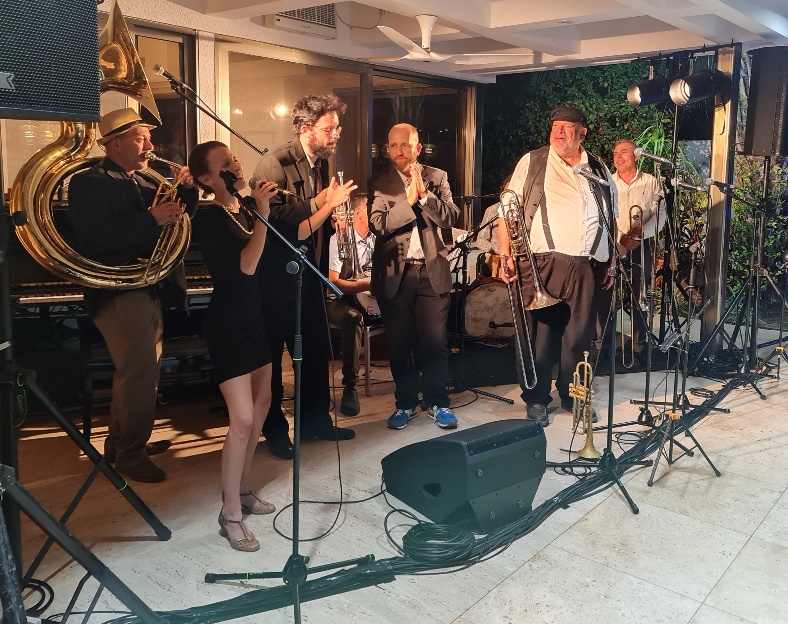
New Orleans Jazz Festival Opens with Reception at Ambassador of Norway’s Residence
The third annual New Orleans Jazz Festival in Tel Aviv opened Wednesday evening with a jazz reception at the Ambassador of Norway’s Residence H.E. Mr. Kare R. Aas .
Guests from the diplomatic corps, civil society, and friends of the Norwegian embassy enjoyed dinner and refreshments and got a sneak preview of Israel’s premier jazz festival launching the next evening in Tel Aviv.
The Eli and the Chocolate Factory Band performed a series of jazz favorites. Throughout the evening guest musicians from top jazz bands in Israel, as well as several singers, took the stage to delight the guests. Guests even took advantage of the evening to dance in front of the pool.
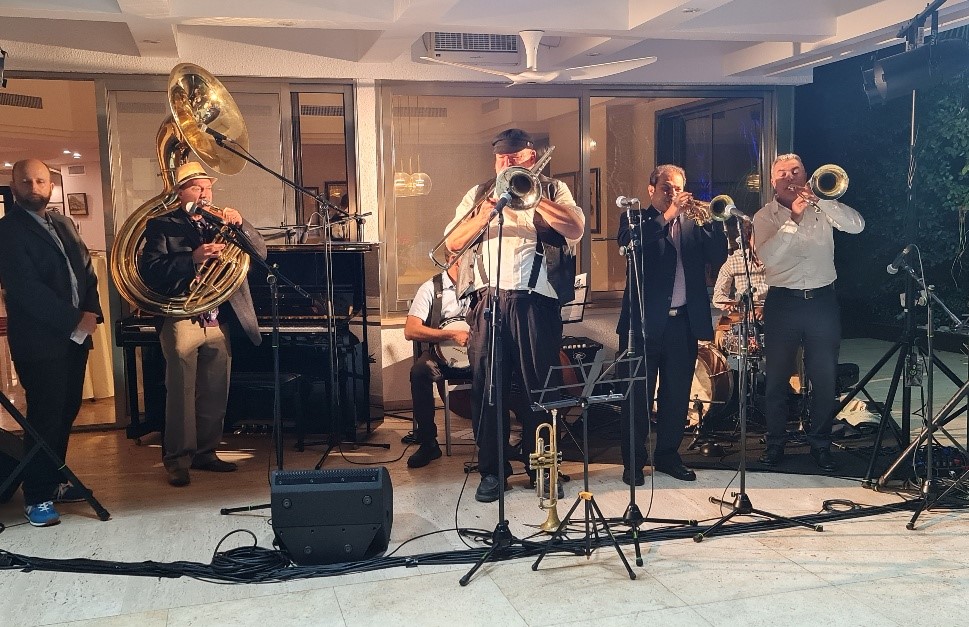
Ambassador Kåre R. Aas explained that the evening was also in honor of the incoming Deputy Chief of Mission, Mr. Bjørn Klouman Bekken. Ambassador Aas thanked the organizers and invited all the guests to enjoy the chance to dance to quality live music. Ziv Ben, the founder and musical director of the festival, addressed the audience, thanking the ambassador and the many musicians. Explaining the impetus behind the festival--celebrating the diversity and influence of jazz, Ziv explained that despite the complexities of holding a festival during Covid-19, there would be over 100 musicians performing this year in Tel Aviv, highlighting the talent of Israeli musicians.
The New Orleans Jazz Festival runs from October 14-16 at the Tel Aviv Museum of Art.
Tickets are available via www.hotjazz.co.il or by calling 03-5733001.
Tickets can also be purchased there for upcoming jazz performances in future months.
- Details
- Written by Embassy of Colombia
